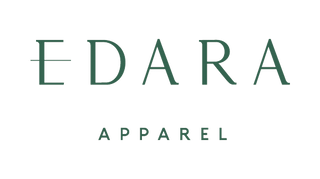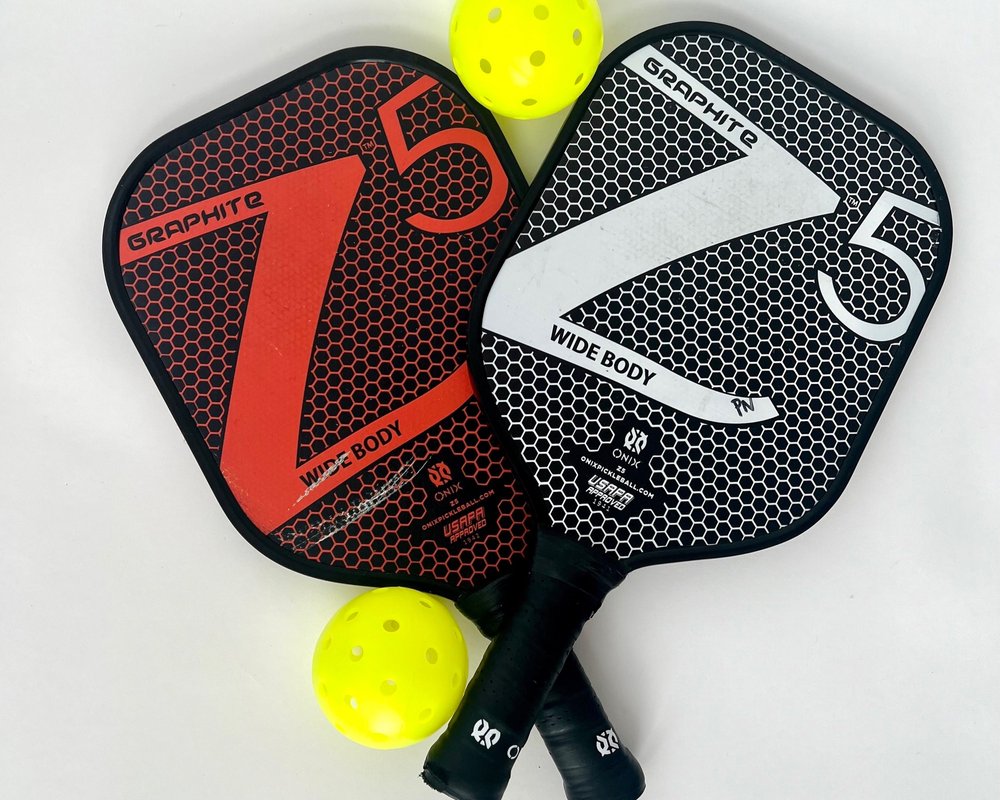
If you are new to paddle sports, then one of the first steps you should take is to learn some basic terms.
If you are learning tennis, the Tennis Lingo 101 guide is perfect for getting you up to speed. And there is a lot of overlap of fundamental terms in pickleball, too.
If you are learning pickleball, start with the Rules of the Game as well as learning the following vocabulary to help set you up for success.
A

Ace: A serve that cannot be returned. Point is awarded to the serving team.
Approach shot: A shot that is hit moving forward, toward the net.
Around the post shot (ATP): When a ball is hit at a wide, sharp angle, a player on the receiving side can get low and return the ball around the end post of the net. In this trick shot, the ball doesn’t actually go over the net, but around the side of it.
B
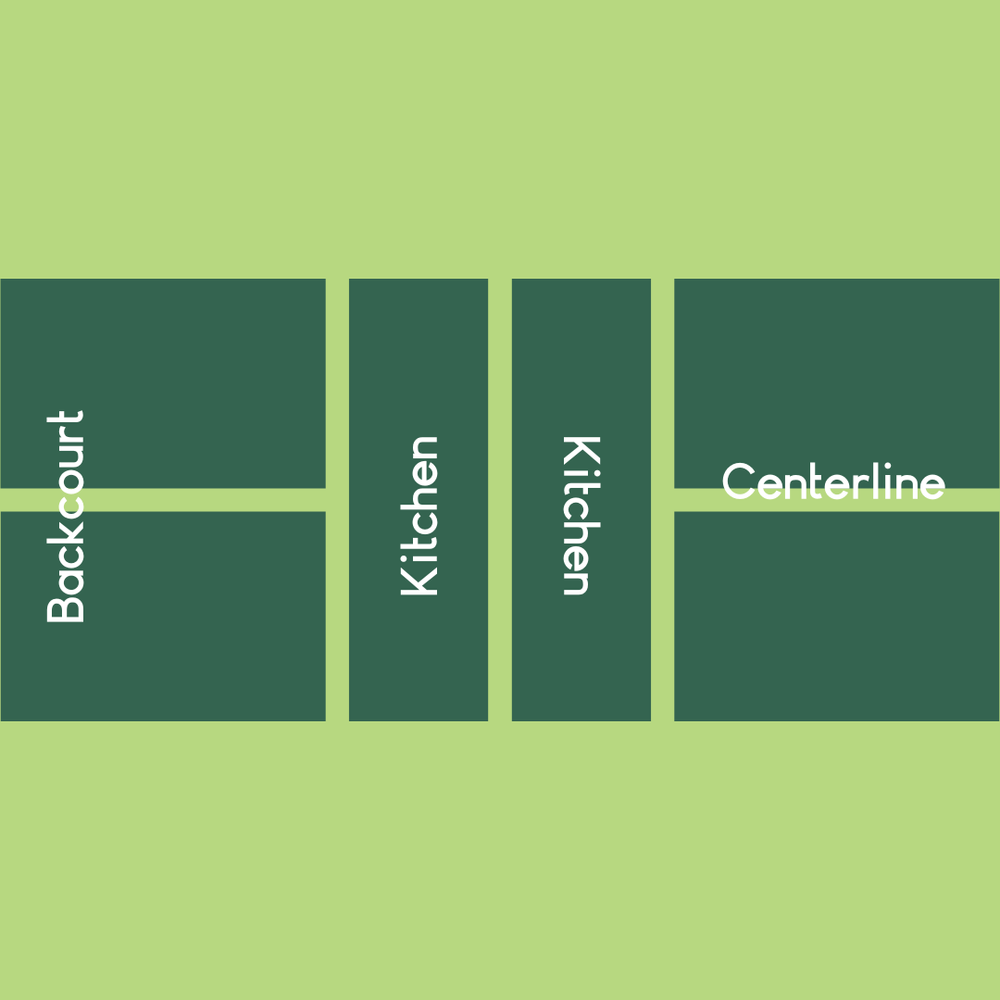
Backcourt: The area inside the court, near the baseline.
‘Bounce it’: How to communicate with your partner when you think the ball may land out of bounds. Let it bounce before you hit it to ensure it is a fair ball.
C
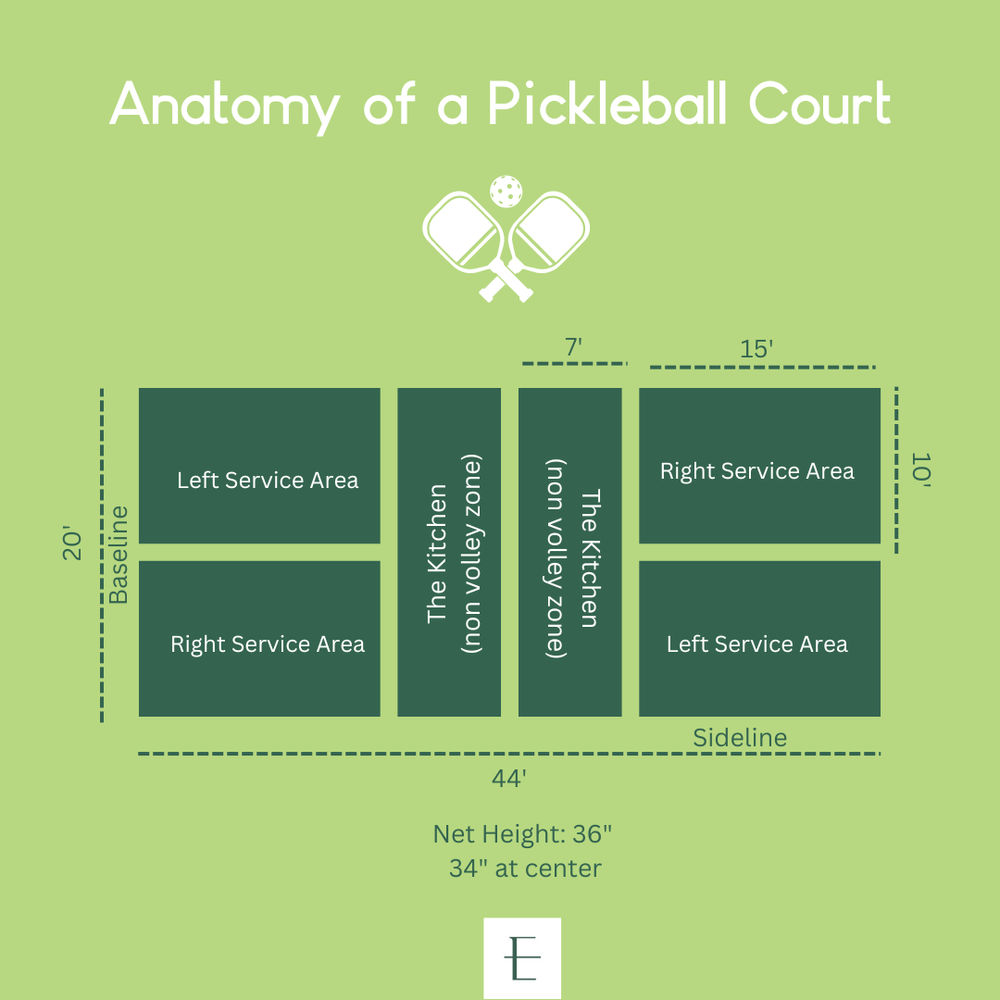
Centerline: The line that extends from the kitchen to the baseline, thus dividing the court into two equal halves.
Court: The pickleball court is a badminton-sized court with a slightly modified tennis net. The net is 34 inches high at the center and 36 inches high at the sidelines.
Cross-court: The section of the court (divided by the centerline) directly diagonal of you. You must serve cross-court.
D
Dink Shot: A dink is a low-bouncing, soft hit that lands in the kitchen/non-volleying zone.
Down the line: ‘Down the line’ refers to a shot that travels parallel to the sideline and lands in the service area directly opposite of the hitter (it is not hit diagonally).
Drop shot: A drop shot is a low, soft shot with backspin so that it hits just over the net and then does not continue in a forward motion after it bounces.
F

Flabjack: A flabjack refers to the first two shots of any point in a pickleball match where the ball must bounce once before a player can hit it. After the third shot, a player can take the ball out of the air without it bouncing.
Foot fault: When a server’s foot makes contact with or crosses over the baseline prior to striking the ball. A foot fault also occurs if a player’s foot steps on the line or crosses over the line into the kitchen when volleying.
G
Game: A game is won by the first player or team to score 11 points (winning by 2 points). Some pickleball games play to a score of 21 (winning by 2 points).
K
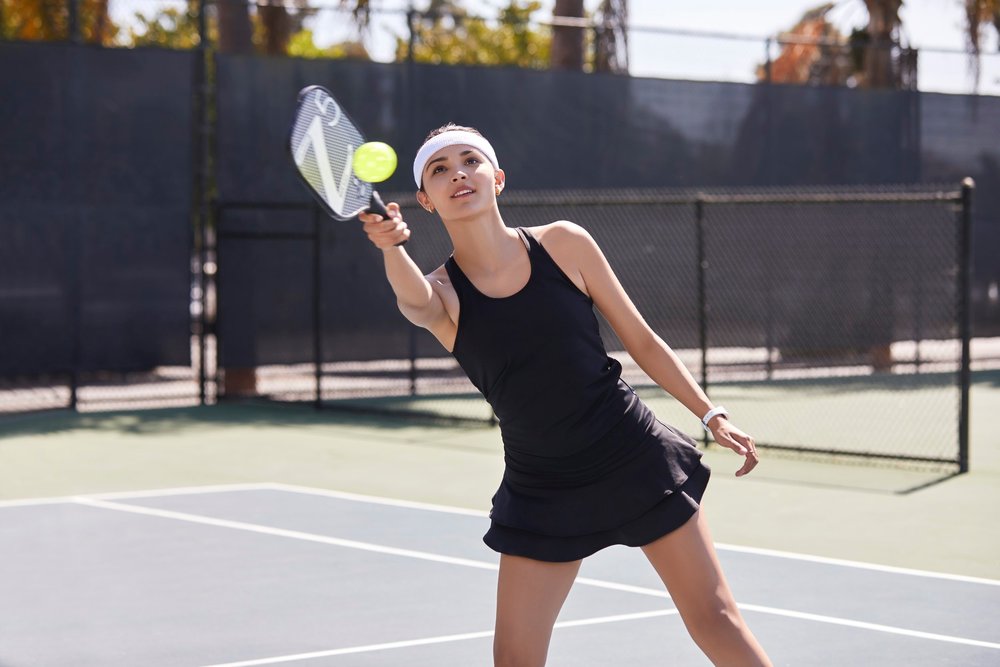
Kitchen (the non-volley zone): The non-volley zone, or the area seven feet from each side of the net. A player cannot volley while standing in the kitchen.
L
Let: Similar to tennis, a let is a serve that hits the net and lands in the service court. A let serve is replayed.
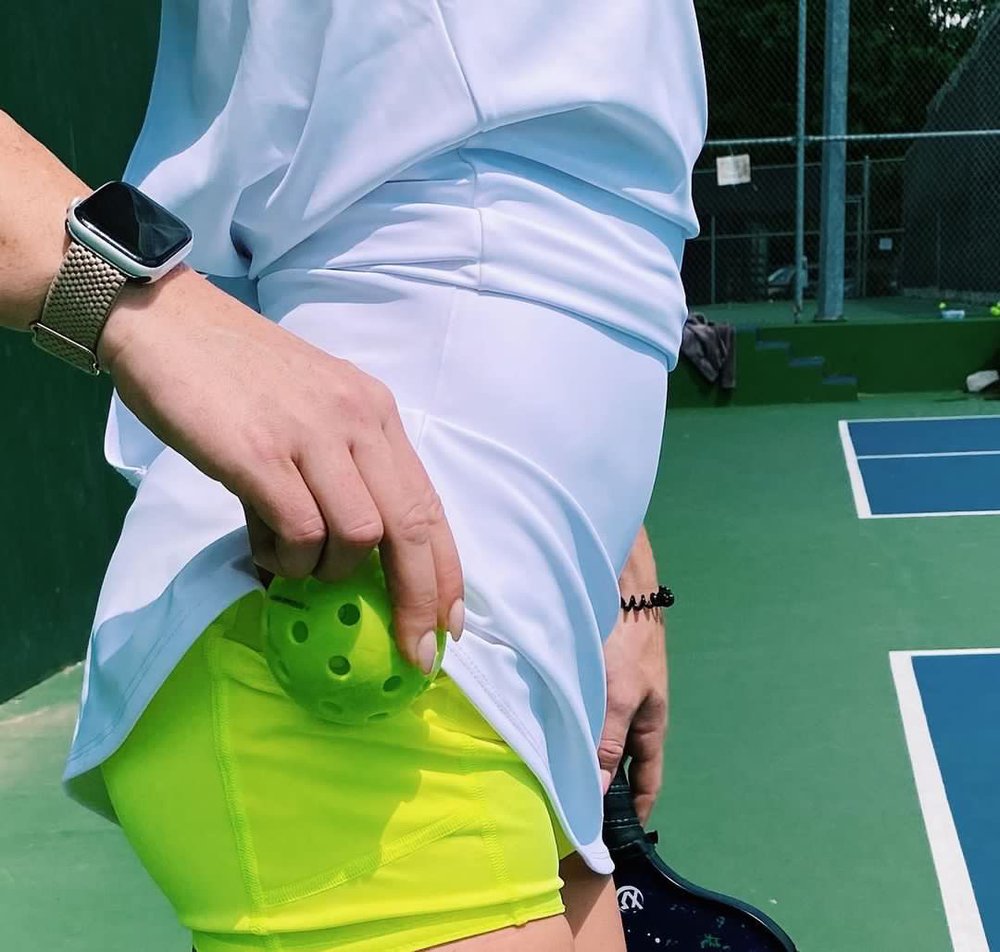
Lob: A lob is a high, deep shot that is hit over the opponent's head, forcing the play back toward the baseline.
O
‘OPA’! A cheer players sometimes shout after the 3rd shot, thus signaling that open volleying has begun.
P

Paddle: Pickleball paddles come in a variety of sizes, shapes, and materials. Read more about the size, composition and shape of paddles here.
Pickled: Getting "pickled" is the equivalent of getting "skunked" in other sports. It means that a team loses a game without scoring a single point. If you lose a pickleball game 11-0, you've been "pickled."
Poach: As in tennis, a poach shot is when a player (in doubles) crosses the center line of the court to hit a ball that is intended to land in her partner's side of the court.
S
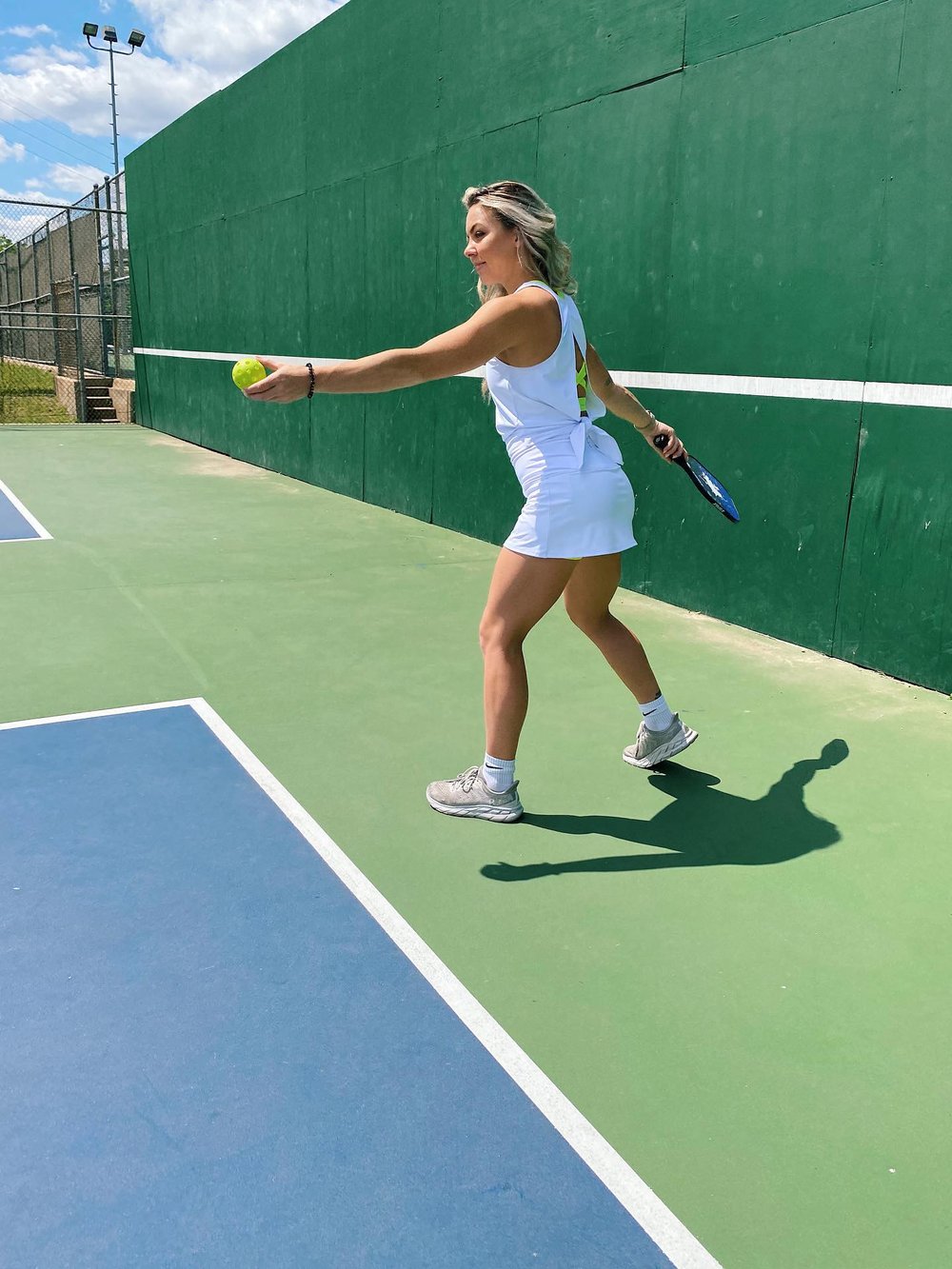
Sideout: A sideout in pickleball occurs when the serving side loses both serving attempts and the other team is awarded its chance to serve.
T
Two bounce rule: After a serve, the ball must bounce once on each side of play before either team can volley. After the 3rd hit, the ball can be taken out of the air in the form of a volley or overhead.
V
Volley: Hitting the ball in the air, during a rally, before the ball has a chance to bounce onto the court.

